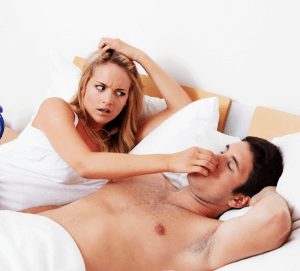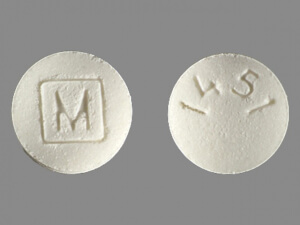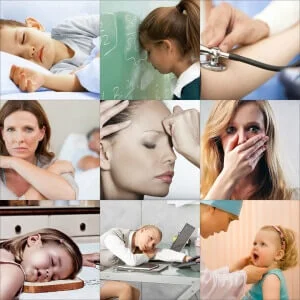Obstructive sleep apnea is one of the most common kind of sleep apnea, but there are other types as well. As we’ve noticed in the previous article, central sleep apnea (or CSA) is one such type and can occur along with your obstructive sleep apnea or on its own.
What Is Sleep Apnea and How to Treat It?
Snoring can be seen as amusing and may become something of a joke, but sleep apnea is a dangerous disease that can have potentially severe consequences.
A person who suffer from sleep apnea may complain about constant feeling of fatigue and the difficulty with the occurrence of a certain sleep phase. People living close to patients, also note the decline in energy and activity. Constant snoring and other manifestations of the disease interfere with the sleep of healthy people. Periodic sleep deprivation can cause the development of many diseases.
Educating yourself on the signs, symptoms and risk factors associated with the condition can help you to protect yourself and your loved ones from its effects.
What Is Obstructive Sleep Apnea?

When sleeping, the muscles relax and the tongue and neck structures move. This causes the upper airway to become obstructed but leaves chest movement unaffected. This impairs gas exchange, raises blood carbon dioxide levels and lowers the pH, which stimulates neural centers.
The person wakes up after 10 seconds the active phase of apnea. The awakening is a conditional trigger that removes the obstacle and normalizes respiration. Immediately after recovery of the breathing person can easily return to the original phase of sleep. Typically, the recovery cycle is no more than 5 minutes.
What Are the Symptoms of OSA?
Oftentimes, someone with sleep apnea may not even realize they have it, because episodes occur only when they’re asleep. Frequently, it is the people that live with a sleep apnea sufferer who first noticed the symptoms.
Signs that can be observed during sleep include loud snoring, interruptions in breathing during sleep and sudden awakenings paired with gasping or choking. Snoring is not always indicative of the presence of apnea. Often, the snoring is temporary and disappears after treatment of the nasopharynx. But among the symptoms of people who suffer from sleep apnea, is more likely to snore.
Symptoms that can be observed during the day or over time in adults include:
sleepiness or fatigue during the day;
- morning headaches;
- sensation of dryness in the mouth and pulling pain in the throat upon waking;
- difficulty concentrating and forgetfulness;
- the constant change of mood, a predisposition to depression, aggression and anxiety;
- sweating at night;
- lowered sex drive;
- high blood pressure.
Symptoms in children may be harder to spot but common ones include:
- bedwetting;
- sweating at night;
- sleepiness;
- problems at school;
- snoring;
- restlessness in bed;
- unusual sleeping positions.
Who Is at Risk for OSA?
A number of factors contribute to who is at risk for obstructive sleep apnea. Not everyone who meets these criteria has or will have sleep apnea, but it is more common in people with these other conditions.
People who have excess weight or suffer from obesity are more likely to have OSA. Therefore, before the start of treatment, the doctors recommend eliminate the obesity cause. People who naturally have a narrow airway, large uvula or short neck are also at a higher risk. Having enlarged tonsils or adenoids or throat swelling can contribute as well.
Those with diabetes or forms of high blood pressure including pulmonary hypertension and other types are more likely to develop obstructive sleep apnea. Other associated conditions include asthma and chronic nasal congestion.
Genetic risk factors also play a role. A family history of sleep apnea increases your risk, as does being male. Smoking, too, can increase your risk of developing OSA. If you have the opportunity to carry out prevention and premature to fix the body, then use it. Any disease easier to prevent than to cure. Follow their own health and pass periodic medical examinations to keep under control not only health but also quality of life.
Difference Between Obstructive, Central Sleep Apnea and Sleepness

Central sleep apnea and related diseases may have a number of potential causes, including neurological problems, heart problems, as well as medications and other substances. The reasons for CSA and for this type of sleep apnea are less certain than they are for OSA.
One difference between obstructive sleep apnea, sleepiness, and central sleep apnea is that, during CSA, no effort is being made to inhale. In obstructive sleep apnea, one attempts to breathe in but the airway is blocked. During CSA or central sleep apnea, the brain fails to give the signal to inhale, which leads to a rise in carbon dioxide levels.
In CSA, the brain and heart do not agree on what is a normal breathing cycle, which explains why the breathing rate to shift between apnea and hypopnea, unusually slow or shallow breathing, during the night.
Why Is It Dangerous?
If left untreated, sleep apnea can be a very dangerous disease due to its potential long-term effects. Sleep apnea prevents the sufferer from getting the deep sleep necessary for good health.
This insomnia can have serious long-term consequences, including an increased risk for hypertension, stroke, weight gain, and diabetes, as well as pulmonary and cardiovascular diseases. It can also have negative effects on mental health and could increase one’s risk for depression and anxiety and may also result in neurocognitive deficits.
OSA can cause harm one’s social and work life as well due to a worsened mood and the inability to stay awake at work or while spending time with family and friends. It can also cause a partner to sleep in another room and may disrupt their sleep as well and expose them to the same risks associated with prolonged sleep interruptions.
How OSA Is Diagnosed

During a physical examination, a doctor will check the back of a patient’s throat, mouth, and nose for extra tissue or any other abnormalities. They may also measure their client’s neck circumference, waist circumference, and blood pressure. They will ask about your symptoms, interesting facts about your sleep and general health and for information about your medical history related to sleep apnea.
An assessment also usually includes completing the Epworth Sleepiness Scale, which can be seen below. The scale asks how likely someone is to fall asleep during various daily situations on a scale of 0 to 3. Patients who score 18 or more are considered to be at risk for serious sleep apnea.
Epworth Sleepiness Scale
- 0 = would never doze;
- 1 = low probability of a nap;
- 2 = moderate chance of dozing;
- 3 = increased likelihood of symptoms of slumber.
| Situation | Chance of Dozing (0-3) |
|---|---|
| Reading while seated | |
| Watching TV | |
| Sedentary in a public location (e.g. a cinema or meeting) | |
| Riding in a vehicle for one hour continuously | |
| Lying down during the day to take a break | |
| Sitting and having a conversation | |
| Remaining calmly seated following a lunch with no alcohol | |
| Stationary in traffic for a few minutes in a vehicle | |
| Your Total Score |
A doctor may also refer someone to a sleep specialist who may perform a sleep study, such as a Polysomnography, during which heart, lung and brain activity breathing patterns blood oxygen levels and arm and leg movements are monitored during sleep. The doctor may also use an at-home version of this test.
How to Cure Obstructive Sleep Apnea

Some patients may opt for natural treatments for mild cases of OSA, such as herbal natural remedies or those based on Ayurvedic medicine, an ancient holistic healing system that originated in India.
For more severe cases, patients may need what is known as noninvasive positive-pressure ventilation to hold the airway open. A nasal or full-face mask may be used with a CPAP, APAP or BiPAP machine, which help to keep airflow regular.
Medications are not often used, although one drug, Modafinil, has been approved for the treatment of sleep apnea. It does not cure sleep apnea, but it can help you to stay awake during the day.
If these treatments are not successful, surgery may be used to stop sleep apnea from occurring, usually for people who have excess or misshapen tissue that obstructs breathing. A simple adenoidectomy, uvulectomy or a remodeling of the posterior oropharynx may be used. For the most severe cases, a tracheostomy may be required.
When You Need to Treat It
It’s always a good idea to talk to your doctor about sleep problems. If it starts to affect your daily life or you or someone else notices telltale signs of OSA, you should consult with a doctor.
If you frequently snore loudly enough to disturb others’ sleep, you may want to talk to your doctor. Breathing interruptions during sleep, waking up gasping or choking and excessive sleepiness during the day can also help you to know when to treat a potential case of OSA.
If you think you may have OSA, it’s important to seek treatment as soon as you can in order to prevent long-term problems and improve your current quality of life.
Effects of Modafinil in Patients with OSA

Taking modafinil can help patients with OSA to stay awake and alert during the day and help them to avoid some of the negative effects of the condition, including mood changes, inability to stay awake and problems at work or school. Although it can treat the causes of sleep apnea, it can significantly reduce some of the symptoms and negative Modafinil side effects.
Obstructive sleep apnea, although it may not seem like it, can be a very serious condition that can have substantial negative consequences on someone’s health and well-being. Patients often do not realize they have the condition, but it is important to talk to your doctor if you experience any of the related symptoms or think you may have OSA. Did you know that we offer free Modafinil samples and free Armodafinil samples delivered straight to your door?

 Order Free Artvigil 150 mg Armodafinil 10 Samples Online
Order Free Artvigil 150 mg Armodafinil 10 Samples Online Generic Modalert 200mg Modafinil 10 Samples Pack
Generic Modalert 200mg Modafinil 10 Samples Pack
 sleepiness or fatigue during the day;
sleepiness or fatigue during the day;